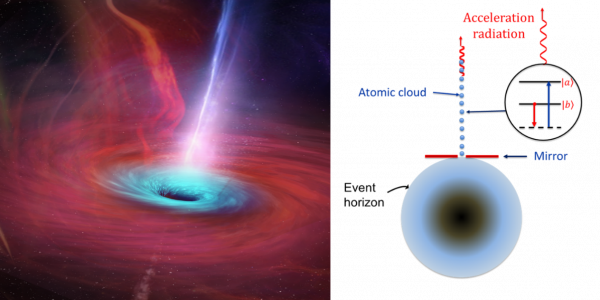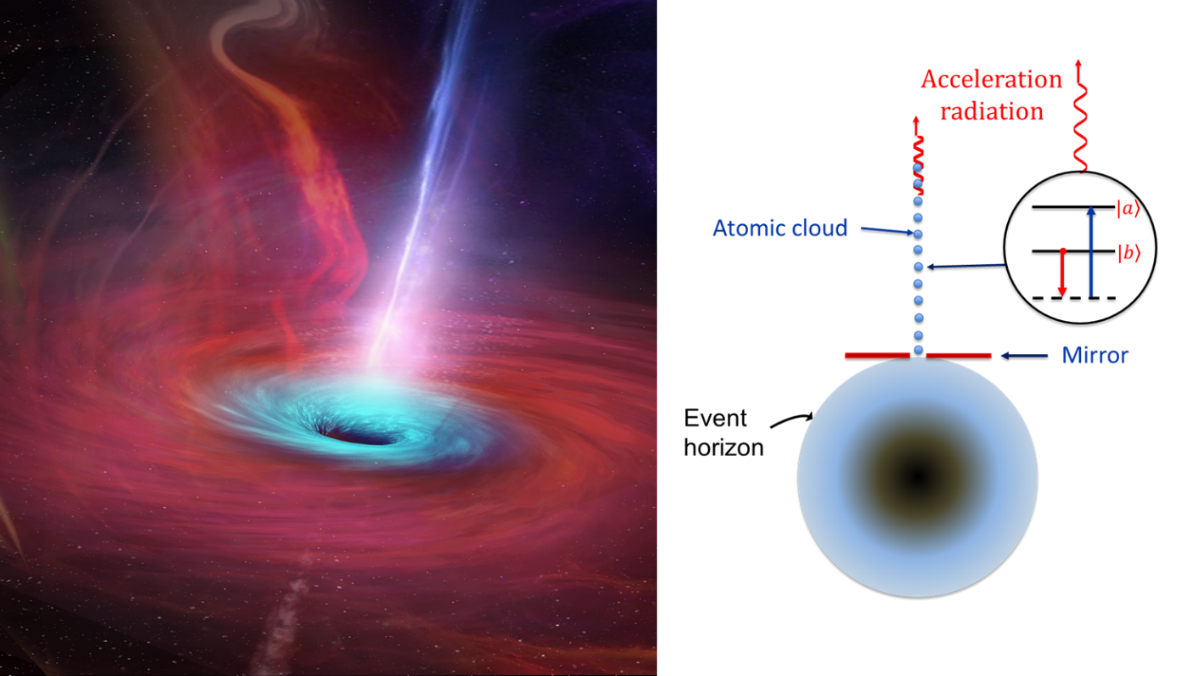From Special to General Relativity with Unruh and Hawking: Light from atoms falling into a black hole
General relativity as originally developed by Einstein is based on the union of geometry and gravity. Half a century later the union of general relativity and thermodynamics was found to yield surprising results such as Bekenstein-Hawking black hole entropy and Hawking radiation.
In their seminal works, Hawking, Unruh and others showed how quantum effects in curved space yield a blend of thermodynamics, quantum field theory and gravity which continues to intrigue and stimulate. It has been shown [1] that virtual processes in which atoms jump to an excited state while emitting a photon is an alternative way to view Unruh acceleration radiation. The present work [2] is an extension of that logic by considering what happens when atoms fall into a black hole (BH) as shown in Fig. 1.
This problem also shows a new way to arrive at Einstein’s equivalence principle. Connection with the “temperature as an imaginary time” paradigm of many-body theory is also illustrated by this problem. In general, the quantum optics – black hole physics interface is a rich field.
Figure 1: (Left) Artist's concept of a supermassive BH. (Right) BH is bombarded by a pencil-like cloud of two level atoms falling radially from infinity. The relative acceleration between the atoms and the field yields generation of acceleration radiation.
[1] M.O. Scully, V.V. Kocharovsky, A. Belyanin, E. Fry, F. Capasso, Phys. Rev. Lett. 91, 243004 (2003).
[2] M.O. Scully, S. Fulling, D. Lee, D. Page, W. Schleich, A.A. Svidzinsky, PNAS 115, 8131 (2018).


